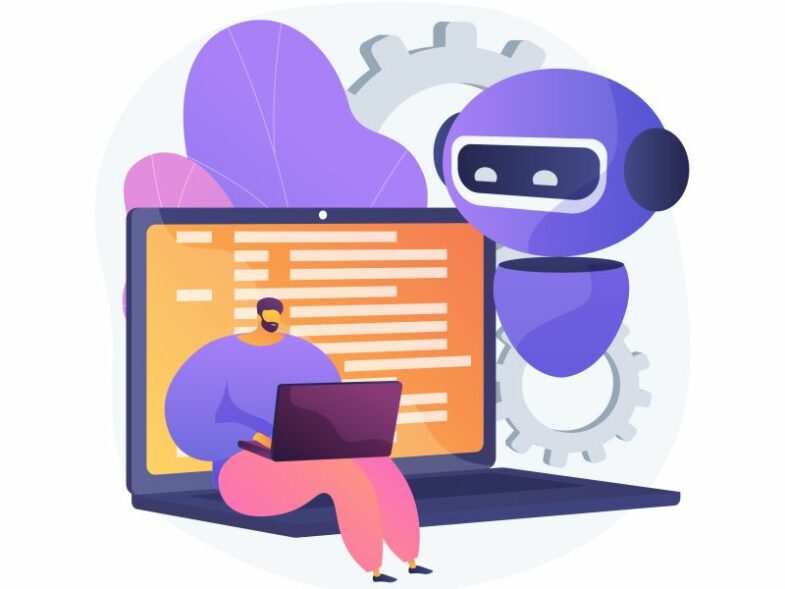In recent years, the landscape of education has undergone a significant transformation, with online learning emerging as a central force in shaping the future of schooling. Traditionally, education was confined to the physical classroom, where students gathered to learn under the guidance of their teachers. However, as technology has advanced, the rise of digital tools and platforms has revolutionized how students access education, offering unprecedented opportunities for growth and development.
Here are several reasons why online learning is poised to become the future of education for school students:
Expanding Learning Support with Expert Guidance
One major advantage of online learning is the easy access to additional academic support. As students navigate digital lessons, they may need extra help to grasp certain concepts or improve in specific areas.
This is where online tutoring services come in. These platforms connect students with expert educators for one-on-one sessions tailored to their needs. Whether struggling with math, reading, or another subject, students receive targeted guidance to strengthen their understanding.
With flexible scheduling, online tutoring companies offers convenience that traditional services often lack. Students can get help with exam prep, homework, or difficult topics—all from home.
The diverse range of tutors ensures students find the right fit for their learning style, making online learning a valuable tool in digital education. This personalized support bridges gaps in understanding and enhances academic success, proving that online learning can meet every student’s unique needs.
Accessibility and Flexibility
One of the most significant advantages of online learning is its ability to provide students with access to education regardless of their geographic location. Students in remote or underserved areas, who might have limited access to quality educational institutions, can now attend classes online from the comfort of their homes.
This accessibility not only breaks down geographical barriers but also offers flexibility in terms of learning schedules. Online platforms often allow students to learn at their own pace, revisiting lessons as needed, and completing assignments during hours that suit their personal or family schedules.
Personalized Learning Experience
Every student has a unique learning style. While traditional classrooms are designed to cater to a broad group of students, online learning offers the opportunity for more personalized instruction.
Adaptive learning technologies used in many online programs can tailor lessons to each student’s strengths and weaknesses, offering targeted support where it’s needed most. This individualized approach can help students stay engaged and motivated, ensuring they grasp concepts at their own pace before moving on to more challenging material.
Cost-Effectiveness
Traditional education often involves substantial costs, such as tuition fees, transportation, textbooks, and materials. Online learning eliminates many of these financial burdens. Schools can significantly reduce their operational costs by moving to an online model, and students can benefit from the affordability of digital resources.
Many online platforms offer free or low-cost educational materials, making learning more accessible for families with limited financial resources. Additionally, students can take advantage of open educational resources (OER), which are freely available educational materials that enhance their learning experience without breaking the bank.
Diverse Learning Resources
Online education opens the door to a wealth of resources beyond traditional textbooks. Students can access interactive multimedia content, educational videos, podcasts, simulations, and even virtual reality experiences. These diverse resources engage students in various ways and cater to different learning styles.
Whether through visual aids, hands-on activities, or immersive environments, online learning makes it easier for students to understand and retain complex subjects by appealing to multiple senses and preferences.
Preparation for the Future Workforce
As technology continues to evolve, digital literacy is becoming an essential skill in the modern workforce. Online learning platforms not only teach academic subjects but also offer valuable exposure to digital tools and communication platforms that students will encounter in their professional careers.
By engaging with online learning, students can develop critical skills such as self-discipline, time management, and digital collaboration abilities that are increasingly in demand across industries.
Global Collaboration and Cultural Exchange
Online learning also provides an opportunity for students to interact with peers from around the world. Through virtual classrooms and collaborative projects, students can gain exposure to different cultures, perspectives, and ways of thinking.
This global collaboration fosters a sense of inclusivity and prepares students to thrive in an interconnected world. Additionally, learning alongside international peers can motivate students to develop a broader worldview and global competencies.
Improved Student Engagement
Technology has the potential to make learning more interactive and engaging for students. Online platforms often feature gamified elements, quizzes, discussion boards, and real-time feedback, which make learning a more dynamic experience.
Students are more likely to remain engaged in their studies when they can interact with content and receive immediate responses to their progress. This active participation can enhance retention and improve overall academic performance.
Continuous Progress and Assessment
With online learning, teachers can continuously monitor students’ progress through automated assessments, quizzes, and analytical tools. This real-time tracking allows educators to identify when students need additional support and to provide timely interventions.
In contrast to traditional education, where assessments are often spaced out and occur at fixed times, online platforms allow for frequent and consistent evaluation, helping students stay on track with their learning goals.
Resilience in Times of Crisis
The global pandemic underscored the importance of online learning as a way to ensure continuity in education, even during unprecedented challenges. When schools were forced to close their doors, online platforms allowed students to continue their studies from home, minimizing disruptions to their education.
The ability to pivot quickly to an online learning environment demonstrates its resilience and capacity to weather unforeseen circumstances, making it a valuable tool for future educational crises.
Sustainability
Finally, online learning contributes to sustainability efforts by reducing the need for physical infrastructure and resources. With fewer students commuting to school, there are reduced carbon emissions, and the demand for physical textbooks and paper-based resources decreases. Online learning, therefore, aligns with global goals for environmental sustainability by promoting a more eco-friendly approach to education.
FAQs
1. How can online learning benefit students with different learning needs?
Online learning offers personalized instruction that can be tailored to student’s learning styles and needs. Adaptive technologies allow for adjustments in the pace of lessons, and students can access a variety of learning resources that support different sensory learning preferences, helping to address a wide range of educational requirements.
2. What role do parents play in supporting online learning for their children?
Parents can play an important role by creating a conducive learning environment at home, setting a consistent routine, and encouraging their children to take advantage of the flexibility online learning offers. They can also help with time management, assist in navigating online platforms, and ensure their child remains engaged with the content.
3. Are there any disadvantages to online learning for school students?
While online learning offers many advantages, it also comes with challenges. These include the potential for students to feel isolated, the risk of distraction due to lack of supervision, and the necessity of reliable technology and internet access. Additionally, some students may struggle with self-discipline and time management in an online setting.
Conclusion
The future of education is undoubtedly moving toward digital platforms that offer flexibility, accessibility, and enhanced learning experiences. While traditional classrooms will still play an important role, online learning is positioned to complement and even replace some aspects of conventional education systems. By embracing technology and providing students with the tools they need to succeed in the digital age, we can create a more inclusive, efficient, and future-ready education system for all.
The evolution of education is happening before our eyes. Online learning isn’t just a temporary shift, it’s the future of education, offering endless possibilities for growth and innovation in how students learn, collaborate, and succeed.


















